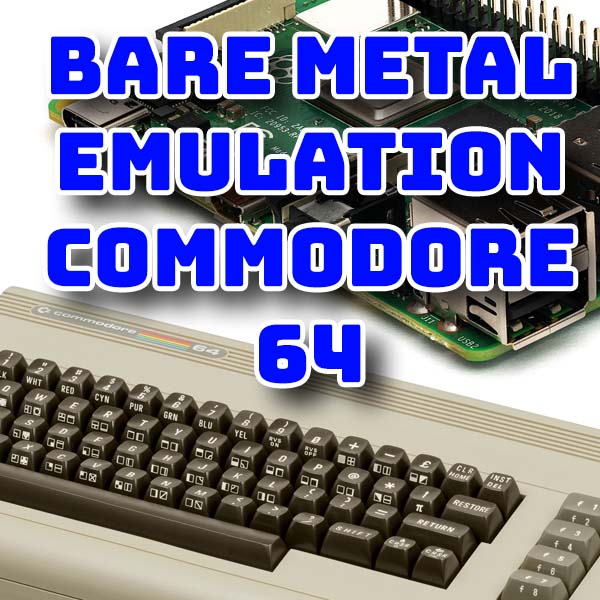
Bare Metal Emulation on the Raspberry Pi – Commodore 64
20th October 2023
How Create, Manage, Resize and Fix Bootable SD Cards and Flash Drives
3rd November 2023Cheap Windows and Linux Mini PCs – Turn a Thin Client into a Full PC
If you’ve been following my website you’ll know that I’m always on the lookout for a good computing bargain. So in this post I’ll be looking at a thin client PC.
Thin client PCs were generally used in larger offices where a central server was used to run the applications with each member of staff having one of these thin client PCs which really operated as a simple display terminal. Applications would run on the main server and then be streamed to the thin client.
Having said that they do contain a full X86 PC. So let’s have a look to see what’s inside them and what we need to upgrade them to something useful.
Turning Your Thin Client PC Into A Full Computer
Thin client PCs are basically full X86 PCs that have been built into a small box. There’s a trend at the moment to fit as much processing power as possible into a small form factor to create a top end mini PC but these have a matching price tag of £500 and upwards.
Thin client PCs took the opposite route where they try to fit as little processing power into the box. And this does raise the first hurdle that you have to be careful off.
Some thin client devices really do have too little processing power. Although you can pick them up very cheaply and they will still work as a PC you’ll struggle to run anything more than very simple applications on them. So the first thing you need to do is to check which processor your thin client contains to work out how powerful it is going to be. I find this CPU benchmark website which allows you to compare PassMark scores very useful for this purpose.
For my base score I take a Raspberry Pi 4 BCM2711 as the absolute minimum processing power I need. Anything more than that will give you a useful computer, but of course the more power you can get the better.
The thin client I’ve chosen is a WYSE 5060 also know as an N07D. This contains a quad core AMD GX-424 running at 2.4GHz with integrated AMD Radeon R5E graphics. This puts its power at about twice that offer Raspberry Pi 4 but probably not quite as powerful as a Raspberry Pi 5. As standard the unit comes with 4GB of memory and an 8GB hard drive. We’ve got Gigabit ethernet, USB 2 and 3 ports and dual display port outputs, but no WiFi or Bluetooth. I picked mine up on eBay for £30 but they usually sell as a buy now price of around £50.
So to get this up to a useable specification we’ll need at least a 128GB SSD, and if we can run to it a second 4GB memory stick. Luckily I had a suitable memory stick lying around so I’ve dropped that into the spare second memory slot that hidden behind the metal shielding. For the SSD I needed an extension cable to connect to the soldered on SATA port and as you can see I had to squeeze it all into the empty space inside the case.
So that gives us a really neat 2.4GHz, quad core PC with 8GB RAM and an SSD main drive. A fairly respectable low end spec.
Total cost counting the PC as £50 comes to around £80 which is about the same as you’d pay for a compatible Raspberry Pi 5 board.
What Can It Do That A Raspberry Pi Can’t?
I’m drawing a lot of comparisons here with the Raspberry Pi ‘s But that’s only really to give a comparison of computing power. The thin clients are a very different beast.
The first difference of course is that these are Windows compatible. To install Windows 11 you’ll need to use a work around as they don’t usually meet the minimum hardware requirements. So please check out my video covering installing Windows 11 on unsupported hardware.
First off you’ll need to get into your BIOS to allow booting from USB. Usually these devices are protected by a BIOS password, but this should be set to the default for your device so just do a web search to find out what that is.
From then on it should be a fairly straight forward Windows installation.
Windows Performance
So, How well does this PC perform with Windows 11?
Surprisingly well!
As a general office / home PC I can’t really fault it. Word processing and office tasks, browsing the web, streaming and watching videos are all absolutely fine. It’s not as spritely and a core i7 powerhouse, but you’ll not really notice any delays or annoying slowness.
On the gaming front – we always have to test retro gaming! – it’s OK rather than great.
Using stand alone emulators to get the best performance you can run all the usual 8 and 16 bit consoles and computers, but at the Nintendo 64 we meet it’s limits. Less intensive N64 games such as Mario Kart are fine, but something like Goldeneye hits some slowdown and sound glitches. Still playable but not perfect!
PSP is just out of reach. You could play the games but not a great experience. PS2 and GameCube are a definite no.
Moving on to Linux
So what about a light version of Linux to get a bit more performance. In the video I installed Lubuntu, a light Linux distro. This does make a difference.
Office, home and video tasks are just that little bit more responsive. Windows was good, but under Linux it’s even better.
On the gaming front PSP emulation now runs at full speed, even with the hard to emulate titles. So you can count the full PSP catalogue as within reach.
PS2???? Not quite. The games run. But some will drop down to around 20-30 fps. Some lighter games may be OK, but in general PS2 and GameCube are still no goes.
Conclusion
As a £/$ 50 computer these are great. They are small and compact, make no sound and would go great attached to a TV to turn it into a spare computer or retro gaming centre.




